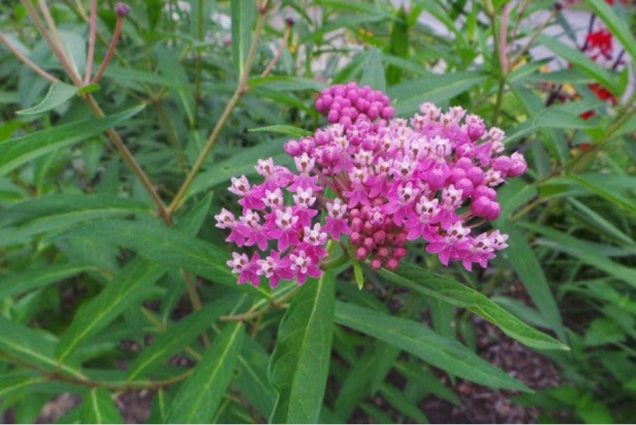
Have you wondered what is causing milkweed leaves in your garden to look diseased? The discoloration on the milkweed in the photo looks like a disease, but is actually caused by ground level ozone (GLO). GLO is a combination of pollutants emitted by cars, power plants, industrial boilers, chemical plants, and refineries.

GLO pollution can negatively affect plants, trees and ecosystems in home gardens, forests, parks, wildlife refuges, and wilderness areas. Ozone harms sensitive vegetation during the growing season.
Native plants affected by GLO are swamp milkweed, cut-leaf coneflower, buttonbush, black eyed Susan, white wood aster, cardinal flower, and milkweed. Trees affected by ozone include black cherry, quaking aspen, tulip poplar, white pine, redbud, flowering dogwood, and red maple.
How ozone pollution effects plants and trees
- Reduces photosynthesis
- Causes slower growth
- Increases plant susceptibility to disease
- Decreases seed production
- Shortens plant life span
- Reduces ability to handle stress
- Causes leaf injury that reduces nutrients essential to pollinators
- Increases chemicals that are harmful to insects eating leaves
- Degrades the quality of plant tissues
GLO’s negative impacts on ecosystems include a decrease in the variety of forest plants, changes habitat quality, and negatively impacting water and nutrient cycles.
If ground level ozone is causing all those problems for plants, what do you think it is doing to you? Find out here and here.

Leave a Reply